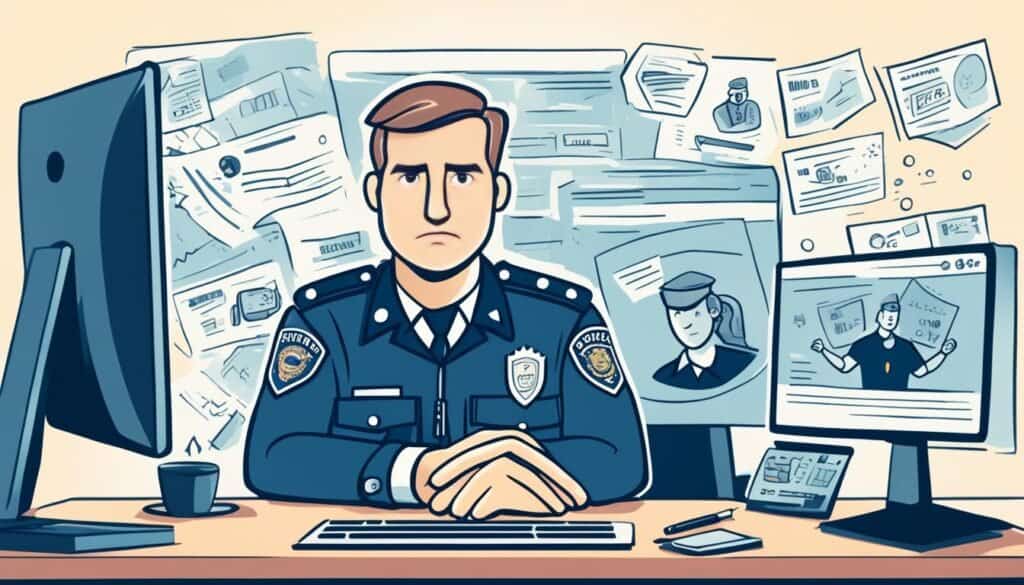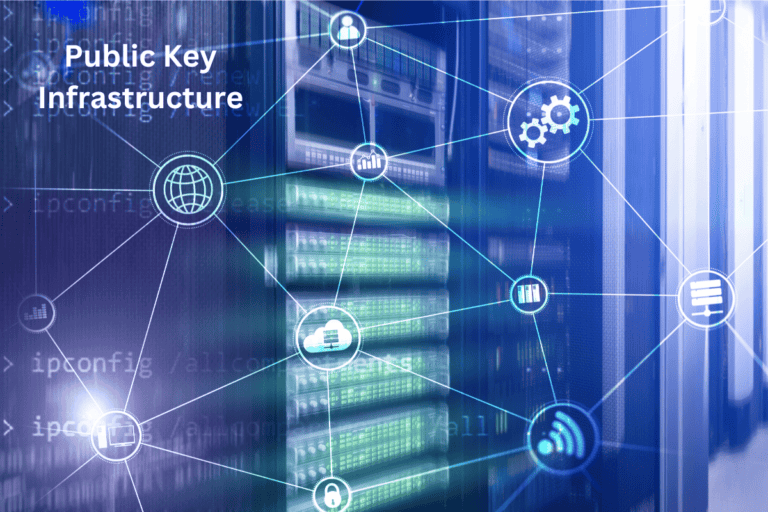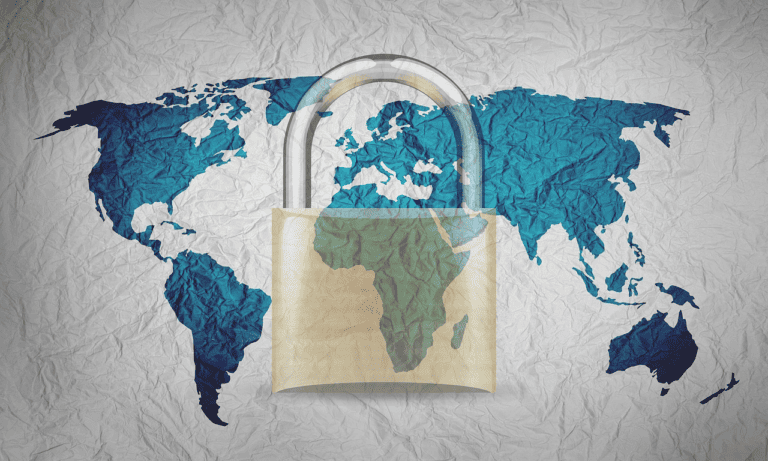Cyberbullying Impact and Prevention Tips
59% of U.S. teens have faced bullying online. This shows how far-reaching cyberbullying is. It highlights the need for better digital safety and awareness. Online spaces have become the new spots where bullies target others. This type of bullying affects victims deeply, beyond just the digital world. Our goal is to help readers fight back against social media bullying. We aim to provide useful cyberbullying resources and stress the importance of keeping teens safe online.
Cyberbullying hits young people hard. It’s not just an online issue; it affects their social life, schoolwork, and happiness. By spreading the word about cyberbullying, we can build a safer online space. It’s all about respect and kindness. Having the right tools and know-how is key to stopping cyberbullying from spreading.
Key Takeaways
- The high prevalence of cyberbullying among teens highlights the necessity for comprehensive digital safety measures.
- Understanding the multi-faceted nature of online harassment is essential to developing effective cyberbullying prevention tactics.
- Education and resources play a pivotal role in promoting cyberbullying awareness and equipping individuals to combat it.
- Parental involvement and the support of educators are critical in safeguarding teens against the dangers of social media bullying.
- Access to reliable cyberbullying resources can significantly enhance teen online safety and well-being.
- Collective efforts to prevent and address cyberbullying can lead to a more inclusive and respectful digital environment.
Understanding Cyberbullying and Its Forms
The internet is very important in our lives today, especially for young people. So, it’s crucial to know what cyberbullying is and its effects. This new type of bullying happens online and can hurt people through different websites and apps. It also leaves marks online that can be found and dealt with.
Defining Cyberbullying in the Digital Age
Cyberbullying definition means using digital technology to hurt, scare, or make someone feel ashamed on purpose. It is different from bullying in person. It can be anonymous and spread fast online, making it hard for the one being bullied to get away from it.
Various Platforms Where Cyberbullying Occurs
Cyberbullying can happen in many places online. Types of cyberbullying include mean texts, abusive social media posts, and bullying in games. It’s seen on social media platforms like Facebook, Instagram, and Twitter. It also happens on messaging apps like WhatsApp and Snapchat, plus in online games.
The Digital Footprint Left by Cyberbullying
Cyberbullying leaves a digital footprint. This is a trail that can help solve these issues. Things like emails, messages, and posts can show who the bullies are. They help protect those who are being bullied. This shows that online actions are hard to erase and can cause real harm.
| Platform | Common Types of Cyberbullying | Impact on Victims |
|---|---|---|
| Social Media | Impersonation, Public Shaming, Exclusion | Emotional Turmoil, Social Isolation |
| Messaging Apps | Harassment, Threats, Spreading Rumors | Anxiety, Fear of Personal Safety |
| Online Gaming | Exclusion, Verbal Abuse, Profile Hacking | Depression, Lowered Self-Esteem |
To sum up, understanding the cyberbullying definition and knowing the different types of cyberbullying are key. Knowing about social media bullying helps us prevent it. The digital footprint not only helps deal with bullying but also warns people about the lasting effects of what they do online. By fully understanding how cyberbullying works, we can make the internet safer for everyone.
The Pervasiveness of Cyberbullying Among Youths
Todays’ youth face a digital world full of challenges. One major concern is the increase of cyberbullying. This section looks into how young people are affected by it. We will explore the impact and understand its wide reach through statistics.
Rise in Cyberbullying Incidents on Social Media
Social media and cyberbullying incidents have a clear link. As social platforms grow, so does the chance for harassment. Spaces meant to bring people together are now often used for bullying. This shows the strong influence online communities have on young lives. They can either help stop or promote cyberbullying.
Cyberbullying Statistics: A Closer Look
Many studies show a concerning number of teens face cyberbullying. Looking at these facts shows us how big the problem is. By examining the latest statistics, we can see where and how these attacks happen. We also learn about their effect on young people’s well-being.
Critical analysis of statistical data exemplifies that while cyberbullying is indeed a multifaceted problem, it is also one that leaves a digital trail – a trail that might hold keys to developing more effective preventatives and interventions.
Recognizing the Signs of Cyberbullying
Identifying cyberbullying indicators is crucial for protecting everyone from the hidden dangers online. This includes children, teenagers, and adults. Knowing the signs of cyberbullying is key to help in time. Signs of cyberbullying might be hard to spot since it’s often hidden. Yet, some behaviors can show if someone is being targeted on the internet.
Spotting cyberbullying involves noticing changes in how a person feels. Victims may feel anxious, angry, or sad because of online abuse. They might pull away from friends or feel worse about themselves. Watching for these emotional and behavior changes is vital.
Physical symptoms can also reveal a lot. Some may have trouble sleeping or eating changes due to cyberbullying’s stress. Falling grades may show teachers and parents that a child is struggling with cyberbullying.
- Sudden dislike for digital devices or social media
- Emotional reactions to device use
- Keeping online activities secret
- Big changes in who they hang out with or act around others
Being aware and talking openly can really change things. It’s vital to have regular chats about online life. This helps in spotting cyberbullying early and making sure people feel safe to talk about their worries.
The Psychological Toll of Cyberbullying on Teens
Cyberbullying goes beyond the screen, deeply affecting teens’ minds and emotions. It creates a lot of psychological trouble. Understanding this link helps us tackle cyberbullying better.
Emotional Distress and Mental Health Concerns
Cyberbullying makes teens feel trapped, causing a lot of emotional pain. It makes getting away from the bullying almost impossible. Victims often face anxiety, depression, and feel powerless. This doesn’t just stay online—it hits their everyday life and future hard.
| Psychological Symptom | Percentage of Cyberbullying Victims Affected |
|---|---|
| Anxiety | 30% |
| Depression | 25% |
| Feeling of Helplessness | 45% |
The Connection Between Cyberbullying and Self-Esteem
Cyberbullying can destroy a teenager’s self-esteem. When teens are constantly attacked online, their self-confidence can hit rock bottom. This can lead them to pull away from friends, do poorly in school, and use harmful ways to cope. We need to help them rebuild their confidence.
It is crucial to help teenagers become strong against these challenges. We should support them more in our communities. By teaching everyone about cyberbullying, we can help victims fight back and feel good about themselves again.
Cyberbullying and Its Effect on Academic Performance
Cyberbullying has a huge impact on students both emotionally and in their schoolwork. It’s important to look at how cyberbullying and school grades are linked. This is especially true when thinking about the future of education.
Impact on Concentration and Learning
Cyberbullying hurts a student’s focus in class. Its impact on learning is huge. Victims often find it hard to pay attention or connect with what they’re learning.
Constant worry and stress from being bullied online can harm how well they think. This can make it harder for them to do well in school.
Attendance and School Avoidance Due to Cyberbullying
Being bullied online makes some kids too scared to go to school. They’re afraid of seeing their bullies or going online. This leads to them missing a lot of school days.
This fear can make kids stay away from school. It hurts their grades and can make them feel left out. In the end, this can make it hard for them to succeed in school.
Physical Consequences of Cyberbullying
Understanding online harassment means recognizing its physical effects as well. These are not just emotional but impact victims’ health and daily life. Such effects show how serious cyberbullying can be.
Victims might experience physical symptoms that don’t seem related to the digital world at first. Yet, they reflect the stress and anxiety from being cyberbullied. For example, many have trouble sleeping because cyberbullying follows them everywhere.
Research has shown that cyberbullying creates a stressful environment. This can lead to harmful physical reactions. Our bodies try to protect us from stress, but too much of it, like from ongoing bullying, is bad for us.
| Physical Symptom | Possible Cause | Long-term Impact |
|---|---|---|
| Headaches | Chronic stress from online harassment | Increased risk of migraines |
| Stomach Aches | Anxiety related to cyber threats | Gastrointestinal issues |
| Sleep Disturbances | Fear of missing out (FOMO) on social media | Impaired cognitive function |
| Eating Disorders | Negative body image driven by cyberbullying | Nutritional deficiencies |
| Fatigue | Lack of restorative sleep | Decreased academic performance |
The health consequences of cyberbullying affect everyday life significantly. Knowing about these symptoms helps adults recognize and help victims. It shows the real risk of cyberbullying to well-being.
“The intersection of mental health and physical health cannot be overlooked when considering the full spectrum of cyberbullying’s harm.”
Increasing protection for digital citizens involves understanding both mental and physical health impacts. By doing so, we can create stronger defenses against cyberbullying. We aim to protect everyone’s health in our digital world.
Cyberbullying’s Role in Anxiety and Depression among Adolescents
Cyberbullying has more effects than just immediate sadness. It can lead to long-lasting mental health issues in teens. Understanding how cyberbullying is linked to issues like anxiety and depression is key. We must work hard to take care of our kids’ mental well-being in this digital age.
Mental Health Risks for Cyberbullying Victims
Those who face cyberbullying can feel trapped in a cycle of stress. Being harassed online can make them feel very anxious and depressed. This stress is worse when they feel alone and have no one to help them.
If a teen stays away from friends, seems sad, or loses hope, they may need help. These signs mean it’s important to act to support their mental health right away.
Addressing Emotional Well-being in Cyberbullying Cases
To tackle cyberbullying, we need a plan that involves learning, support, and reaching out. Making sure our kids can talk about their worries safely is crucial. Schools should have open talks about cyberbullying. They should also make sure help like counseling and peer groups are easy to find.
Helping teens deal with cyberbullying also means teaching them how to deal with stress. We must show them positive ways to act online. Teaching them how to use the internet safely can help stop cyberbullying. It can also prevent the stress and sadness that come with it.
Legal Ramifications and Cyberbullying Laws
Today, as we tackle the rise of cyberbullying, knowing the laws is key to helping victims. Laws against cyberbullying have grown to match the crime’s severity. They show what those who bully online will face. The work of police is crucial in stopping bullies and defending victims’ rights.

Cyberbullying as a Legal Offense
Cyberbullying is now a crime, and the laws around it have changed a lot. Victims have ways to fight back legally. Areas have laws that make bullies pay for their actions. The laws aim to stop bullies and help those they’ve hurt.
How Law Enforcement Handles Cyberbullying
Law enforcement and cyberbullying efforts are more organized today. Police learn how to deal with these issues better. They go from the first report to investigating and maybe to taking bullies to court. Police play a big role.
Understanding digital proof and how bullies hide online is important for police. Their training in online know-how helps them protect victims. They ensure bullies face the results of their actions.
The Role of Social Media Giants in Cyberbullying Prevention
Social media platforms play a key role in battling cyberbullying. They are more than just sites for chatting and sharing creativity. Facebook, Instagram, Snapchat, and TikTok can also be places where bullying grows if not watched closely.
These platforms have put in place actions to make online communities safer. They use reporting tools, AI to watch content, and teach users about safety. This helps catch and stop bullying fast and supports those hurt by it.
Tech companies work with experts to make strong rules and guidelines. They not only react to bullying but also try to stop it before it starts. They run awareness campaigns and work with groups fighting against cyberbullying.
| Social Media Platform | Anti-Cyberbullying Features | Community Guidelines |
|---|---|---|
| Automated flagging of harassment, Bullying Prevention Hub | Strict rules on harassment and bullying with clear reporting procedures | |
| Comment filters, AI comment intervention, Restrict mode | Community standards to remove harmful content and encourage respect | |
| Snapchat | In-app reporting, Privacy controls, ‘Here For You’ mental health resource | No tolerance policy for bullying or harassment, swiftly removes offending content |
| TikTok | Device-led content management, Anti-bullying software, Family Safety Mode | Guidelines promoting a supportive environment, rapid content review system |
Tech giants keep improving their ways to stop cyberbullying on all platforms. They want to make the internet a safe and kind place. They aim to keep up with changes and meet the needs of everyone online.
Cyberbullying Prevention Strategies and Digital Safety Tips
In our digital world, keeping kids and teens safe online is crucial. We must use cyberbullying prevention and digital safety tips. These efforts include parents and educators. They help teach digital citizenship.
Proactive Measures for Parents and Educators
For kids’ digital safety, parents being involved is key. They should talk about online experiences with their kids. Teachers need to watch out and promote kindness in class and online. Here’s a list of steps for parents and teachers to help stop cyberbullying:
| Stakeholder | Strategy | Example |
|---|---|---|
| Parents | Monitor online activity | Utilize parental control software to oversee social media usage and communication |
| Educators | Implement cyberbullying curricula | Integrate lessons about digital safety and ethics into the standard educational program |
| Parents | Establish clear rules | Create an agreed upon list of do’s and don’ts for online behavior |
| Educators | Foster community partnerships | Work with local organizations to bring speaking events and awareness campaigns to schools |
| Parents | Stay informed on latest trends | Regularly research and discuss the latest social platforms and online challenges with children |
Teaching Digital Citizenship and Responsibility
Taught responsibility in the digital world is important. It’s about knowing their rights and what’s expected online. It includes the effects of their online actions.
Using real-life scenarios in programs and workshops helps teach digital citizenship. Showing good online behavior is good too. Adding stories of cyberbullying in lessons can build empathy and show why online actions matter.
Together, stopping cyberbullying and teaching digital safety are key. They help make the internet safer for kids today.
Helping Victims: Reporting and Coping Mechanisms
Victims of cyberbullying face a lot of distress and uncertainty. It’s vital they know how to seek help and find good ways to cope. The act of reporting cyberbullying is very important. It helps victims find justice and protection. Learning to cope and getting support are key to bouncing back.
The Importance of Reporting Cyberbullying
Reporting cyberbullying stops the abuse and keeps victims safe. Victims and witnesses need to understand that their reports matter. Reports help hold people accountable. They push for investigations and actions by authorities and online services. Reporting also helps collect data. This data improves awareness and helps create better policies against cyberbullying.
Supportive Services and Counseling for Cyberbullying Victims
Counseling offers hope and support to victims of cyberbullying. Specialized counselors provide ways to deal with stress and anxiety. There’s a variety of support for victims. This includes helplines, support groups, and resources from schools and communities.
Here’s a guide on coping mechanisms and support for cyberbullying victims:
| Coping Mechanism | Description | Benefits |
|---|---|---|
| Professional Counseling | Engagement with psychologists or therapists specializing in cyberbullying. | Improves mental health outcomes and provides personalized strategies. |
| Peer Support Groups | Participation in facilitated group sessions with other cyberbullying victims. | Offers a sense of community and shared experiences for empowerment. |
| Self-Care Practices | Incorporation of stress-reducing activities such as mindfulness and exercise. | Enhances well-being and helps maintain emotional balance. |
| Online Resources | Access to educational materials and supportive communities via the internet. | Provides insights into coping strategies and connects victims to helpful tools. |
Dealing with cyberbullying takes a combined effort. Reporting, coping strategies, and finding support are crucial steps. Society needs to ensure these vital services are available to everyone.
How Technology Can Combat Cyberbullying
Technology and cyberbullying are now closely linked. By using artificial intelligence, big steps are being made to stop and lessen cyberbullying’s impact.
Using AI and Machine Learning to Detect Cyberbullying
The use of AI and cyberbullying detection tools is changing digital safety. These tools spot and address possible incidents early on. They process a lot of data, find language patterns, and spot harmful content that people might miss.
AI can also understand emojis, slang, and context. This is key for spotting cyberbullying accurately.
Anti-Bullying Features in Social Media Platforms
Social media’s anti-bullying features also play a big role. They provide comment filters, reporting tools, and ways for peers to help each other. These features give users more control and encourage a safe and supportive environment.
Thanks to tech innovations, a safer online community is possible. By balancing free speech with safety features, the digital world becomes more welcoming. Cyberbullying is being tackled effectively, encouraging positive interaction among users.
Building Cyberbullying Awareness and Educational Programs
In the fight against cyberbullying, it’s key to boost cyberbullying awareness and create strong educational programs. We must start prevention initiatives that teach digital empathy. This helps users navigate the internet safely.
To fight cyberbullying, schools, communities, and online places must work together to raise awareness. By joining forces, we can educate more people, not just in schools but everywhere.
Highlighted Initiatives:
- State-sponsored public service announcements and digital campaigns.
- Integrating cyberbullying topics into school lessons.
- Peer mentoring programs that spread kindness online.
Educational programs aim to change minds and promote action against cyberbullying. They help build a supportive culture. It’s crucial for everyone to understand the impact of their online behavior.
“Knowledge is power. When we educate our community about the realities and consequences of cyberbullying, we empower them to take a stand against it.”
Investing in educational programs and cyberbullying awareness campaigns prepares us for a safer online future. Prevention initiatives are not only about reducing cyberbullying. They also work towards eliminating it, making the internet safe for everyone.
Spreading the Word through Campaigns and Partnerships
The rise of digital platforms means cyberbullying is a bigger threat than ever. It’s vital that we work together to protect kids. Partnerships in cyberbullying prevention bring together different groups to fight this issue. Their awareness campaigns are changing, using knowledge from schools, non-profits, and tech firms. This approach helps reach and inspire our youth more effectively.
Getting young people involved in awareness efforts makes these initiatives more impactful. They speak to their age group in a real way. Their participation brings fresh ideas and strong connections among peers. This can lead to true changes in attitudes and behavior.
Involving Youth Voices in Cyberbullying Awareness
Having young people take part in awareness campaigns is key. It boosts the campaign’s voice and gives them a role in the fight. Schools and groups see the value in youth-driven activities like forums and social media efforts. Teens share their stories, promote better online behavior, and help others understand how to stop cyberbullying.
Creating Support Networks for Teens Facing Cyberbullying
Cyberbullying is growing, showing a strong need for support networks for cyberbullying victims. Having a group that offers support and understanding is key for helping teens fight cyberbullying. This support helps teens feel less alone and scared.
The Value of Peer Support in Combating Cyberbullying
Peer support is very important in dealing with cyberbullying. Friends who understand what it’s like make a big difference. They offer a listening ear and remind victims they’re not alone.
Support groups at school or online can help a lot. They offer friendship and show teens they can overcome cyberbullying.
Role of Community in Providing a Safe Online Environment
A safe online space needs everyone to help, including the community. Schools, families, and local groups must work to create a kind culture. They must act against cyberbullying together.
Communities can use seminars and events to share information. Knowing there’s community support helps teens feel secure online.
Conclusion
Cyberbullying is more than just an online issue. It reflects the complex side of human behavior. It’s a serious concern that goes beyond the internet. It leaves deep marks on young people. It hurts their school performance and overall happiness. We must act to stop its reach.
To fight cyberbullying, everyone has a part to play. Teens, parents, teachers, and social media companies can help make the internet safer. Safety online is crucial. It’s everyone’s fight, not just one person’s. Together, we can create a kind online world.
We call on everyone to help end cyberbullying. Keep talking about it, share your stories, and take action. We can protect and strengthen our online world. Let’s make the internet a place that lifts people up, not tears them down. Let’s take this mission to our communities and beyond.
FAQ
What is cyberbullying?
Cyberbullying uses digital methods to bully someone. It includes hateful messages, rumors, or sharing private content online.
Where does cyberbullying occur?
It happens on social media, messaging apps, gaming sites, and mobile phones. These tools make it easy for bullies to harass anonymously.
How can the digital footprint left by cyberbullying be used as evidence?
Screenshots and saved messages can prove cyberbullying. They help victims report the abuse with evidence.
How prevalent is cyberbullying among youths?
Many teens face cyberbullying. With more social media use, it’s rising. A lot of teenagers have been bullied online.
What are the signs of cyberbullying?
Signs include mood changes, avoiding friends, bad grades, feeling sad or scared, and unexplained aches. These changes can suggest bullying.
How does cyberbullying affect the mental health of teenagers?
It seriously hurts their feelings and self-view. Teens can feel anxious, sad, and even think about suicide. Bullying online deeply affects their happiness.
How does cyberbullying impact academic performance?
It makes focusing hard, lowering grades. Fear may keep kids from school, hurting their learning even more.
Are there physical consequences of cyberbullying?
Yes. Bullied kids might have headaches, stomach problems, or trouble sleeping. These issues come from the stress of bullying.
What are the legal ramifications of cyberbullying?
Cyberbullying is illegal in many places. Bullies can face charges, fines, or jail. Police work to stop these crimes.
What is the role of social media giants in preventing cyberbullying?
Big social media companies must make online spaces safe. They use tools and rules to fight bullying and work with groups for online safety.
How can cyberbullying be prevented?
Preventing cyberbullying involves teaching web responsibility, and promoting kindness. Parents and teachers must talk about online dangers and keep an eye on web use.
What support is available for cyberbullying victims?
Victims should tell someone and get help from adults they trust. Help is available from schools, counselors, and online guides.
Can technology help combat cyberbullying?
Yes. AI and smart software can find bullying online. Social media uses special features to stop and manage bullying.
How can awareness about cyberbullying be spread?
Teaching about cyberbullying is key. Schools, groups, and communities must work together to inform and protect everyone online.
How can support networks be created for cyberbullying victims?
Support comes from friends and community action. Encouraging kindness and a caring online world helps victims feel safer.







